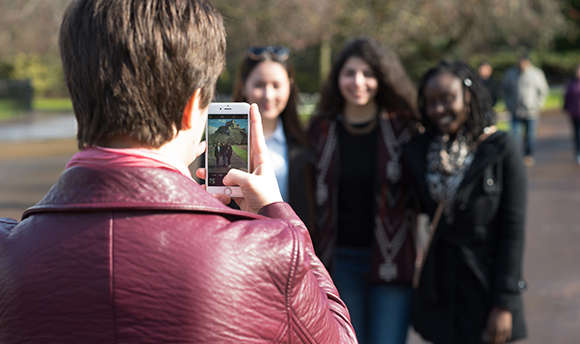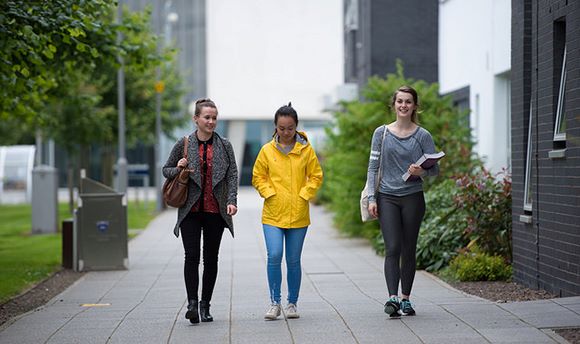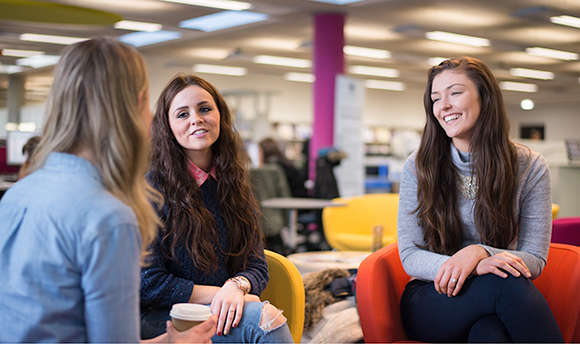QMU’s expertise in speech sciences research is helping to improve the lives of children and young adults who have severe or long lasting speech communication difficulties.
With over twenty years experience of research into speech production and the creation of speech technologies, the research team is applying its skills to help improve the diagnosis and treatment of speech disorders.
Collaborating with NHS speech and language therapists, charitable funders and schools, the team has trialled a range of techniques which have had significantly positive impacts on people with enduring speech problems who were struggling to improve their speech with traditional speech therapy methods.
A major area of work has been the development of electropalatography (EPG). EPG is a technique which is not yet routinely available in NHS clinics. EPG records where and when the tongue makes contact with the roof of the mouth during speech. It can be a particularly useful means of helping some children with speech difficulties to improve their speech because it provides visual feedback to the child, which is not ordinarily available, and does not rely purely on what the child hears.
Articulate Instruments, based at QMU, has been responsible for the development of a new artificial palate which is used in the pioneering EPG therapy. It takes the form of a dental plate which is custom made for the client (child or adult). The client wears the palate which contains 62 electrodes that detect the client’s tongue movement on the roof of the mouth when they speak. These can be analysed and compared to typical speech patterns to help the speech and language therapist identify more accurately errors in the client’s speech. During a session, the therapist also wears a customised palate that models the correct patterns to the client. The client can clearly see the images which the tongue makes on the computer screen. The client tries to copy the therapist’s tongue movements by trying to recreate the same pattern which shows on the computer screen. The client can then view their own tongue pattern and compare this to the pattern made by the therapist. This visual stimulus can be incredibly effective in helping the client achieve more normal-sounding speech.
The technique is proving particularly helpful to children with Down’s syndrome, as they are known to respond well to visual stimuli. A more portable, smaller version was trialled in schools. In contrast to having to attend a specialist clinic, this approach allowed more children with Down’s syndrome to benefit from EPG technology. The project involved classroom assistants being trained to interpret the information provided by the EPG display and learning how to use it with the children as part of their daily speech therapy sessions.
The QMU research team believe that this research project has the ability to impact on the quality of life of children with Down’s syndrome. By providing access to regular therapy and targeting younger children than in earlier studies, the team hopes to correct speech problems at an earlier stage. This will ultimately help children access education, engage more successfully with social activities and improve quality of life.
QMU speech experts are now collaborating with NHS colleagues by taking EPG therapy into community clinics. The aim is to build capacity within the NHS for further specialised speech therapy treatment.
Several clients, who have had the opportunity to benefit from EPG, were pleased to explain how the ground-breaking technology had impacted on their lives.
Client A was a 15-year-old girl who had been fitted in infancy with a cochlear implant.
“The EPG helped me relearn how to speak. I didn't realise what I was doing wrong before but seeing the shapes my tongue made on a computer screen made it easy for me to learn how to change my words. People understand me so much better now and I don't have to repeat what I say nearly so much. And having better speech gave me the confidence to be a speaker at a conference for parents of deaf babies. I wanted to show how well their children could do when they grow up. Lots of the mums and dads were so moved they cried - even my mum."
Client A said she now wants more deaf people to benefit from the same techniques that helped her. "I'm the only one of all my deaf friends who has had EPG and that's not fair. Everyone should have an equal chance to improve their speech," she said.
Client A press cover: Scotland On Sunday / Scotsman Newspapers 14 May 2011 girl-15-becomes-ambassador-ground-breaking-deafness-therapy
Clients B. & C., Parent and Classroom Assistant.
A classroom assistant who had been working with clients B and C on a Nuffield funded project said: “It’s been very positive… [B, age 11] knows exactly how to produce sounds because she’s seeing them on a screen and she really enjoys using the palate.” “[C]… was also benefitting from the trial, with nine-year-old [X] also set to get on board.” Additionally, B’s mother said: “I think EPG has made her think about the sounds she’s producing much more. The screen makes it easier to imagine the sounds and picture them, and I think the whole experience has just given her more confidence.”
Clients B. & C press cover
BBC Website, 5 February 2013 bbc.co.uk/news/uk-scotland-edinburgh-east-fife is a general report that attracted self-referrals for EPG therapy.
Evening News, 9 April 2013 speech-device-helps-downs-pupils-learn-speech and speech-device-helps-down-s-pupils-learn-speech is the source of the quotes given.
Client D was an 8-year-old girl with Downs syndrome who was selected to demonstrate her improved speech skills to Her Majesty The Queen when she opened the new QMU campus in 2008.
In April 2012, she voluntarily contacted the BBC in response to a call for stories to illustrate “meeting the Queen” as part of the Diamond Jubilee. In 2012, aged 12, she reminisced: “The Queen watched me doing speech therapy. She was in a room next door, looking through a window. I was using an electronic palate, which showed different patterns on the screen when I made different sounds. I met the Queen afterwards. I was excited because she's a character in one of my favourite books - The BFG by Roald Dahl. I told my mum I would say 'Hello, your Majister', like the BFG, but my mum said I shouldn't. So I just said, 'Hello, Your Majesty'. The Queen asked me if I found it interesting working with the electronic palate. I said 'Yes, I did, your Majesty'."
Client D Press Cover: BBC Website, 3 June 2012 bbc.co.uk/news/uk-scotland



